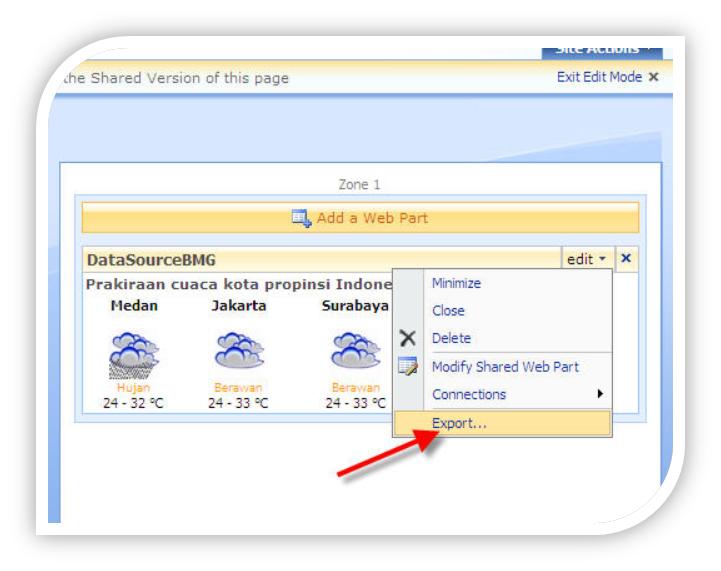Democratization of IT: Creating WebParts for SharePoint Without IT Operations
 I've had several conversations with customers lately about creating some type of gadget gallery for their intranet, something that will allow users to create their own widgets that can be reused by others within the organization. Folks are familiar with creating web parts using C#, but that requires you to write code and install it via a solution package. What they typically are asking for is something that an end user can create and upload without requiring IT support. It turns out that SharePoint provides this concept out of the box simply by creating a .webpart file and uploading it to the gallery.
I've had several conversations with customers lately about creating some type of gadget gallery for their intranet, something that will allow users to create their own widgets that can be reused by others within the organization. Folks are familiar with creating web parts using C#, but that requires you to write code and install it via a solution package. What they typically are asking for is something that an end user can create and upload without requiring IT support. It turns out that SharePoint provides this concept out of the box simply by creating a .webpart file and uploading it to the gallery.
This is done by customizing an existing web part, such as the Data View Web Part. For instance, there's a cool post that shows how to create a weather web part by customizing the Data View Web Part. The web part in that post is created using SharePoint Designer 2007, obtaining XML data from a remote data source and customizing the view of a Data View Web Part. There's another great example of creating a Tag Cloud for SharePoint Blog Sites. Again, a very cool example of customizing the Data View Web Part that is reusable simply by exporting the web part to a .webpart file and uploading it back to the gallery.
Besides the Data View Web Part, you can also leverage the Content Query Web Part. Heather Solomon has a great post that shows how to customize the Content Query Web Part and control the display of data. The Enterprise Content Management team also wrote a great blog post on customizing the CQWP.
The point is that there is a great "widget" framework in SharePoint already. You can do some pretty amazing things with SharePoint as an end user without requiring IT operations to deploy code. See EndUserSharePoint.com for more examples of the great stuff that you can do with SharePoint without IT intervention.
This is the amazing thing about SharePoint… you can do so much without requiring IT admins or even developers. Of course, having a development background is extremely beneficial since you are going to work with JavaScript and XSLT, and tools like Visual Studio 2008 can make this much easier, but as you can see from all the posts listed here you can do all of this with the freely available SharePoint Designer 2007. This is the Democratization of IT concept… enabling end users to get stuff done without going through the rigors of working with the IT department.
I know that most of my audience is developers, so it is uncomfortable to hear this. "But Kirk, people are going to build lots of junk that we're going to have to end up supporting anyway." Yep, that's right! People are going to be able to get their jobs done, and probably are going to do things that aren't best practices by IT standards. But think of the value here… this frees you up to create the higher-value stuff (workflows, site templates, lots of stuff) without boring you with creating yet another CRUD data entry application. And if the application outgrows the end user capabilities and requires developer intervention, then you already have their requirements in the form of a working example sitting in front of you!
The point is that SharePoint is a fantastic platform for end users as well as developers. The more that developers and IT operations can enable the end users to be self-sufficient, the more value that the business will see in IT.
Comments
Anonymous
June 15, 2009
Hi Kirk As someone with his roots in development I understand the sentiment, however, your weather web part perfectly illustrates the conflict that will always exist. Such a web part can be easily crafted from a number of Google or Bing results but an enterprise level solution would have to consider the contract that is created with the XML/RSS feed; in most cases these are either not available for commercial use or carry no guarantee of future stability or consistency. Thanks to the likes of EndUserSharePoint.com a better quality of self service solutions are more within the reach of the "power user" than ever before but not a single one of those users will understand the implications of using SharePoint Designer and few will appreciate that a solution that took them half an hour to copy and paste will take 20 days to develop as a deployable , supportable and maintainable solution. I agree that a higher level of end user self-sufficiency is desirable but it inevitably impacts SLAs, raises expectations and creates an additional burden of support. I am first and foremost on the side of the end user but spare a thought for the poor old developer and IT support.Anonymous
June 15, 2009
The comment has been removed